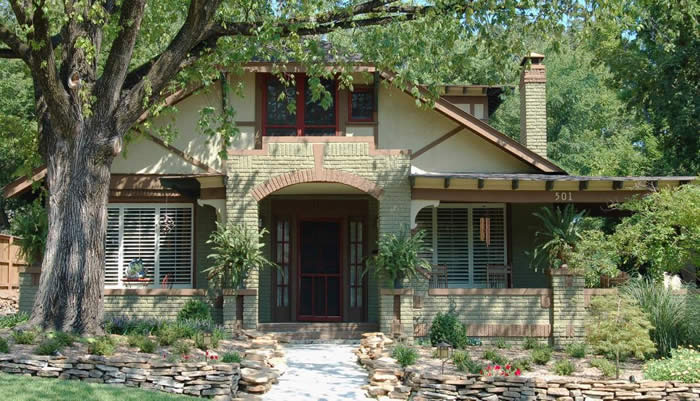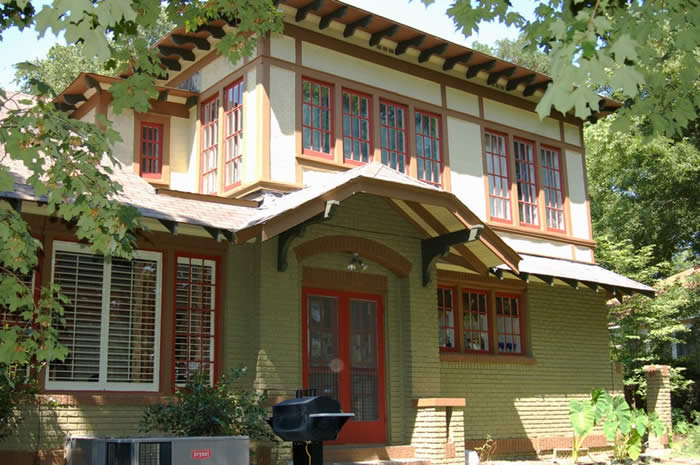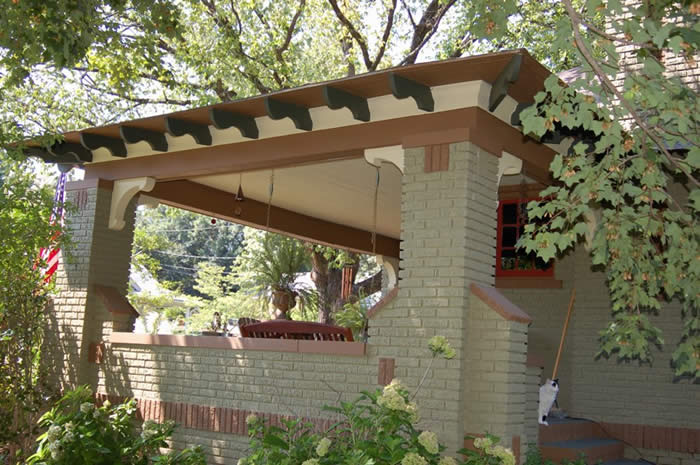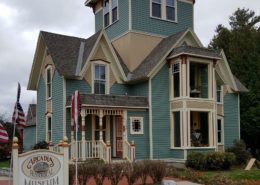Little Rock Tudor Bungalow
“Our house has taken on a miraculous transformation. When we first moved in, it looked haunted and abandoned. The landscaping was so overgrown that you couldn’t turn out of our street. The paint and hardscaping were so old that when I look back at pictures, I cannot believe we lived here.” The paint, new hardscaping and landscaping totally transformed our house. We have delivery guys and people that just stop by that comment on our transformation. People from all over the city stop to ask if we will sell our house!” We are definitely very proud and happy this is our home – and do not plan on leaving any time soon.” Lynne Jetton
As seen in Cottages & Bungalows magazine Summer 2007
Ole style England in America
The Tudor Bungalow is one of those anomalies of early twentieth century American architecture, as it is a style that should not have happened. The bungalow style was essentially set in motion in California in the early years of the twentieth century, and is far removed from Elizabethan England in time and space. While the Arts & Crafts movement did developed in England, in the latter half of the nineteenth century, its architecture was not that of the bungalow. Yet in American the two came together to form these unique picturesque homes.
Goal & Solution
Goal
The painted brick, altered about twenty years earlier, and the brown roof were two areas that needed strong consideration in mounting the color plan. The owners wanted warmer and somewhat brighter colors. They expressed a desire for an Autumn palette of greens, reds and browns in keeping with the spirit of the initial architecture and the Arts & Crafts color approach. Their preference was for an historical look with modern touches.
Solution
A simple combination of traditional Arts & Crafts period colors were chosen and several updated with brighter versions to provide the look the owners desired.




![JettonCBcover_005[1]](http://historichousecolors.com/wp-content/uploads/2013/11/JettonCBcover_0051.jpg)





